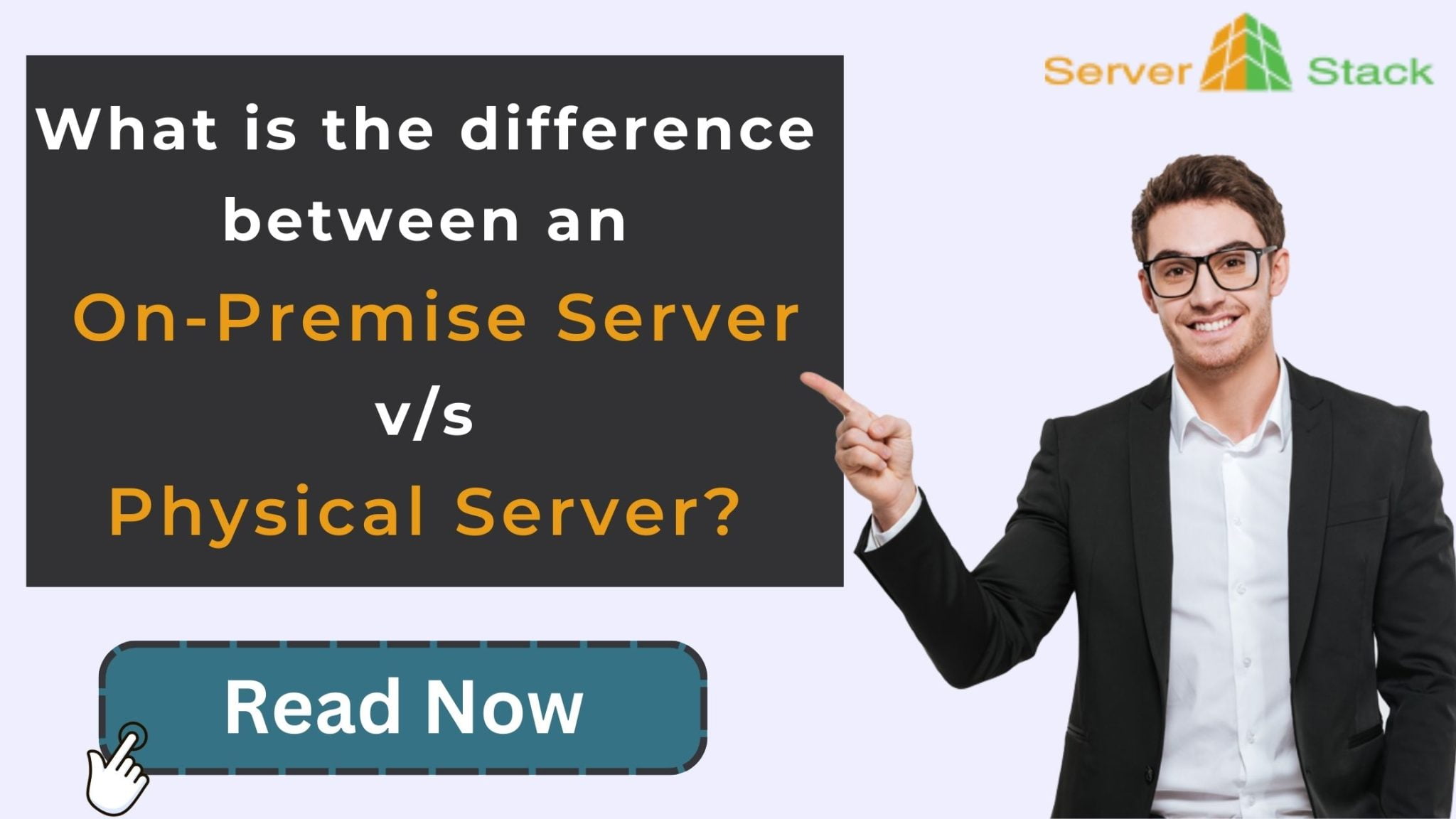Table of Contents
In today’s fast-paced digital world, the demand for reliable and efficient server solutions is on the rise. Whether you are a business owner or an IT enthusiast, understanding the differences between on-Premise and physical server is crucial. In this blog, we will dive deep into these two server options, shedding light on various aspects like server cost in India, server processors, storage, and more.
Choosing the Right Server: It Starts with the Basics
What are the On-Premise Servers?
On-premise servers are physical computer systems or hardware located within an organization’s own facility or data center, used to store, manage, and process data and applications locally, rather than relying on external or cloud-based hosting.
Let's explore the key characteristics
1. Location
On-premise servers are physically present in your office or data center. This proximity provides direct control over your server environment.
Contact us
2. Server Cost in India
The initial investment in on-premise servers can be significant. You’ll need to purchase the hardware, and software licenses, and hire IT staff for maintenance.
3. Server Processor List
The choice of server processors is in your hands, allowing customization according to your specific needs.

4. Storage Server
You have the flexibility to configure the storage capacity based on your requirements, whether it’s a 100 TB storage server or less.
5. Maintenance
Your IT team is responsible for server maintenance, updates, and security.
Read More:
What are the Physical Servers? (Rack and Blade Servers)
Physical servers, also known as bare-metal servers, are physical computer machines that exist in the physical world, as opposed to virtual servers that run on virtualization platforms.
These servers are dedicated hardware devices used to host and manage software applications, websites, or data storage, providing the computational power, storage capacity, and networking capabilities needed to run various services and applications in data centers or on-premises environments.
Rack and Blade Servers both of which have unique features
1. Rack Servers
These servers are designed to be mounted in standard server racks.
They are excellent choices for small businesses with limited space.
Server cost is relatively lower compared to blade servers.
They are versatile and can handle a variety of workloads.
2. Blade Servers
Blade servers are compact, making efficient use of space.
They are hot-swappable, allowing for easy replacement and scalability.
Blade servers are known for their energy efficiency.
Serverstack provides the best technology server in India and the best price for customizable servers available all over India.

Making the Right Choice
When deciding between on-premise servers and physical servers, consider the following factors:
1. Budget
Evaluate your budget constraints, keeping in mind both the initial investment and long-term maintenance costs.
2. Space
Determine the available space for your server infrastructure. Rack servers are suitable for compact spaces, while blade servers maximize efficiency.
3. Scalability
Consider your future growth plans. Blade servers offer scalability, making them a great choice for expanding businesses.
4. Processing Power
Examine your processing requirements and select the appropriate server processor from the list of available options.
5. Storage Needs
Calculate your storage needs, whether it’s 100 TB or less, and configure your server accordingly.
6. Maintenance
Decide whether you have the IT resources to manage on-premise servers or if you prefer a more hands-off approach with physical servers.
Conclusion
The choice between on-premise and physical servers ultimately depends on your organization’s unique needs and resources. Each option has its advantages and drawbacks, so it’s essential to make an informed decision. We hope this article has provided you with valuable insights into server solutions. We hope you need a server. Serverstack provides top brand servers in India such as ASUS Server, Intel Server, and Penguin Server at affordable prices for all types of servers.
If you have any queries regarding servers let’s connect with our server experts
Frequently Asked Questions
Q1. What is the primary difference between an on-premise server and a physical server?
An on-premise server is a physical server located on an organization’s premises, focusing on its location and management. It is a tangible piece of equipment that hosts and runs the server’s software and can be located anywhere, including on-premises.
Q2. Can an on-premise server be virtual instead of physical?
An on-premise server can be either physical or virtual, depending on its location within a company’s property. It can be a physical machine or a virtual server running on a physical server on the premises.
Q3. What are the pros and cons of choosing an on-premise server over a physical server?
On-premise servers offer better control, security, and proximity to users, but can be expensive due to maintenance, space, and cooling. Physical servers, on the other hand, focus on hardware reliability, performance, and space requirements. The choice between these servers depends on an organization’s specific needs and resources, with pros and cons varying depending on the specific needs and resources of the organization.







